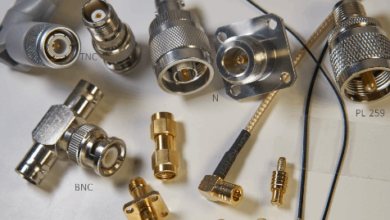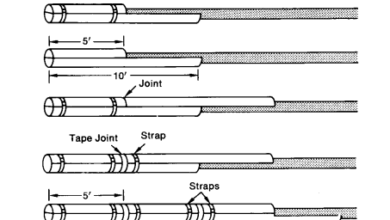Conduit Clamps – What are They? How to Use?
Conduit clamps are very important parts of electrical connections. To fix the electrical cables to walls and create much more organized electrical systems in the buildings, we use conduit clamps. Here we will give detailed information about these systems. And you will be able to select and apply the best one in your electrical installations.
Types of Conduit Clamps
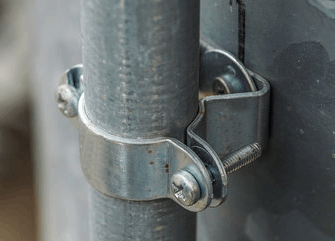
To use in the electrical applicaitons, we are using different types of conduit clamps. According to the type of application, you can use them.
- Two-hole systems: Unlike the single hole, there are two holes to which you attach the screws and nails. So it is very easy to fasten the nails and other systems without any problem. If we compare with the single-hole systems, the attachment of the two-hole applications is more secure.
- Single-hole systems: This is the most general and used type of conduit clamp. There is a hole that you attach a nail or screw to fix the cables on walls.
- Saddle clamps: These are the conduit clamps that are hanging from the ceiling to support the cables of the overhead structures.
- Cushioned clamps: There is a soft cushioning inside the clamp that provides a softer attachment on the cables which are sensitive. These cushions are generally made from PVC or softer rubber materials.
- Pipe hangers: Also use them for hanging pipes in the HVAC conduits.
- Beam clamps: If you need to secure and fix a conduit to a beam, you can use beam clamps.
- U-bolt clamps: Also these are U-shaped bolt systems that are directly attached to the wall to fix the electrical and HVAC pipe conduits.
According on the type of application, selecting the proper one is very important.
Which Applications that We Use Conduit Clamps?
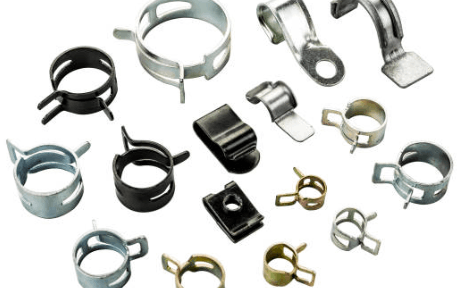
There are several important applications we use these systems.
- Commercial buildings: In commercial buildings, there are very complex electrical installations for machines, devices, and other systems. So the use of conduit clamps is very common in these systems.
- Industrial settings: Also in power plants and factories, we are using industrial stage conduit clamps to secure the electrical cables and connections.
- Residential buildings: To provide safety to the places where people are living, the use of these clamps is very common in residential buildings.
- Outdoor applications: Also use electrical systems for outdoor applications. So the order is very important for safety and organization. To provide this order, we use conduit clamps that are designed for outdoor.
How to Install Conduit Clamps?
To install the conduit clamps, you can follow these instructions.
- First of all, be sure that you comply with the occupational safety rules. You are dealing with electrical things. So, you need to wear a boot that is for electrical workers. Wear cut and electrical-resistant gloves. Also wear safety glasses.
- And determine the places where you need to install these clamps. You need to mark the holes of the spots with a market by placing the clamp. You will know the places that you need to drill to install the clamps.
- And choose the appropriate drill bit to drill the holes. The drill bit must comply with the size of the screws that you will use for the installation.
- Drill the points that you marked on the wall. Be sure that you drilled enough depth.
- Clean the dust and chips that accumulated inside the holes with a blower or brush.
- And attach the dowels that will hold the screws in place. The dowels must comply with the screw size.
- Place the conduit clamps and the cable inside the clamp and attach the screws.
- Repeat this process for all the clamps that you need to attach.
Important Points While Installing Them
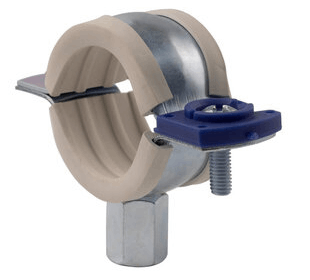
Also, you need to be aware of the other important things while you are attaching the conduit clamps.
First of all, you need to select the proper size of the clamps. At the package of the clamps, you probably see the size of them. And size must not be very tight for the cable to be very loose. If it is very loose, the clamp will not be able to hold the cable. But if it is very tight, probably it will damage the cable. So, it will be better to select a clamp that has the same internal diameter as the outside diameter of the cable.
Also, select the right screws and bolts. In this case, you need to consider the size. The size must comply with the sizes of the holes of the clamps. And also, there are different materials and coatings. For example, you need to select galvanized steel material for outdoor applications.
Refrain from overtightening the screw. If you overtighten the bolts and screws, you will probably damage the conduit.
Using an appropriate number of clamps is also very important to bring order to the cables. Do not use lots of clamps or a low number of clamps.
Do not forget that you are dealing with an electrical installation. So you need to be aware that you need to comply with the governmental codes and electrical safety standards if you are applying electrical installations in commercial or industrial applications.
Materials
In general most of the clamps are made from stainless steel, steel that is coated with zinc or aluminum. And they are generally very good in terms of strength and corrosion resistance.
But also, the use of plastic material is very common. In such electrical installations, a level of resistivity is required for safety reasons. So, the use of plastic clamps is very common. But if we compare them with the metal applications they do not provide the same amount of strength.
General Prices of Conduit Clamps
It can be hard to give exact prices for the different types of conduit clamps. Because the prices can vary according to the type, size, and material of them. To be a guide abotu prices, we can say a range of prices for each type of conduit clamp.
- Single-hole strap clamps: $0.50 to $2.00 per clamp
- Two-hole strap clamps: $0.50 to $2.00 per clamp
- Saddle clamps: $1.00 to $3.00 per clamp
- Cushioned clamps: $1.00 to $3.00 per clamp
- Pipe hangers: $1.00 to $3.00 per clamp
- Beam clamps: $1.00 to $3.00 per clamp
- U-bolt clamps: $1.00 to $3.00 per clamp
- Pipe rollers: $1.00 to $3.00 per clamp
Last Words
We are using different types of conduit clamps that are very useful in such applications. And you need to know how to properly attach these systems to the walls and other applications. And we give important parameters that you need to consider about these systems.
You can find related topics about electrical installations;
Rheostat Switch – How It Works, Applications, and Types
Tru Connector – Company Working Areas and Products
Ceramic Tube – Applications and Types
Duct Plug – Application and Types
15 HP Electric Motor Selection Guide
Electrical Metallic Tubing – Why We are Using Them?
What is a Split Duct and What are its Uses?
400 HP Continuous Electric Motor Reviews from Different Sellers


